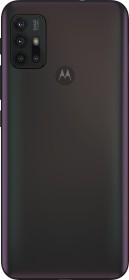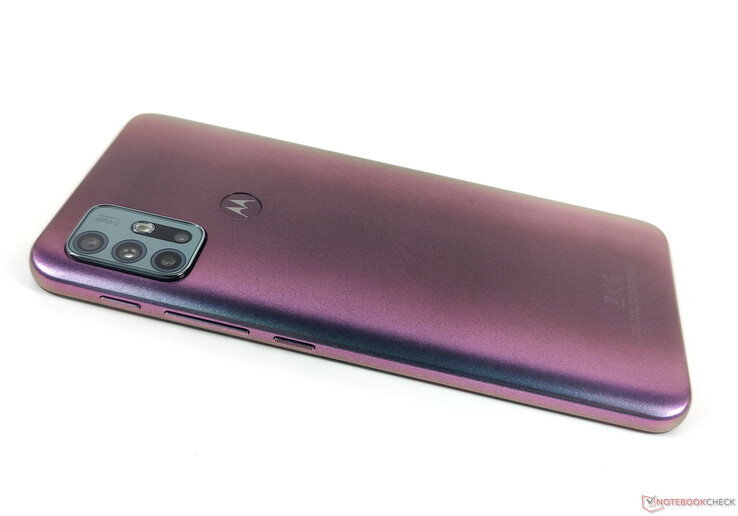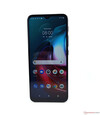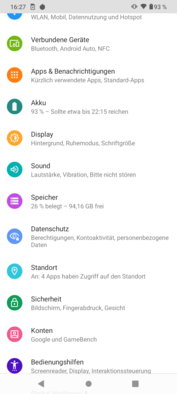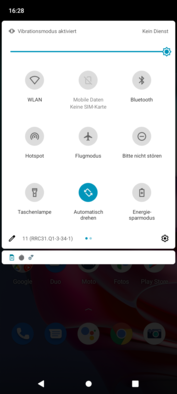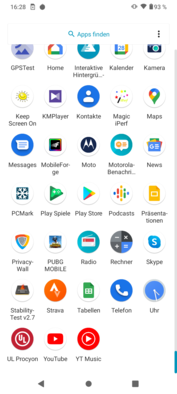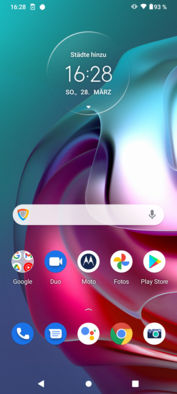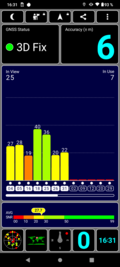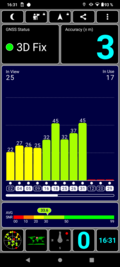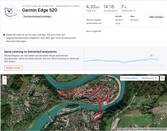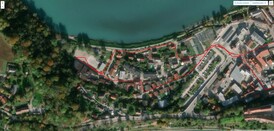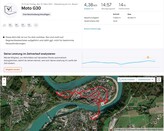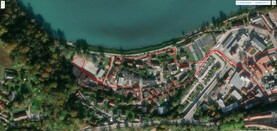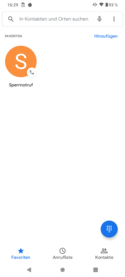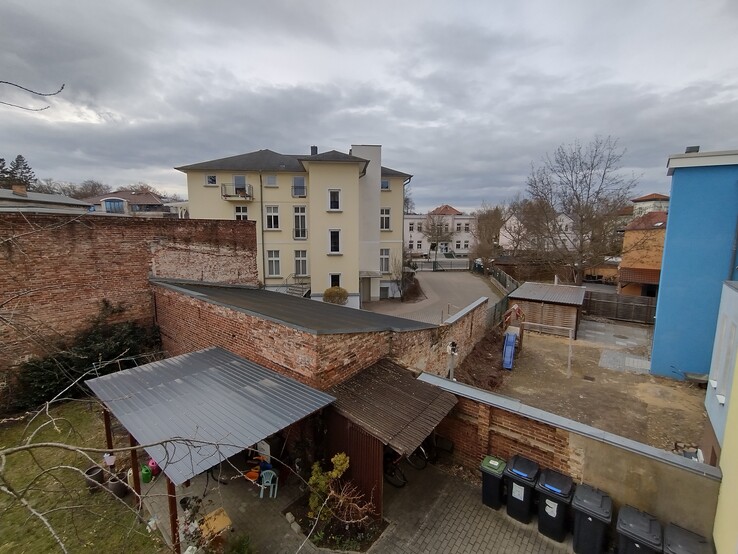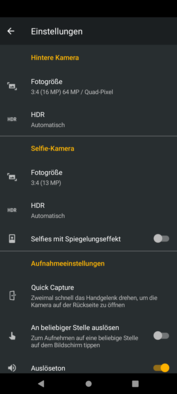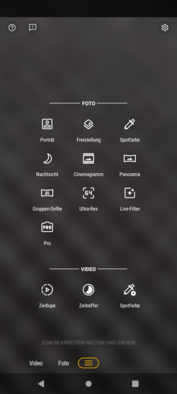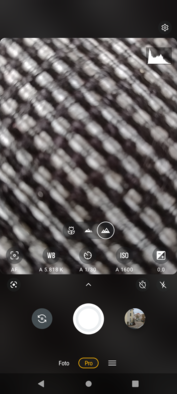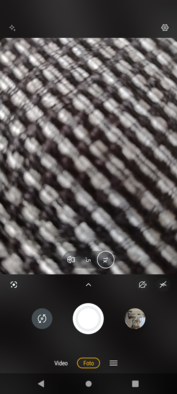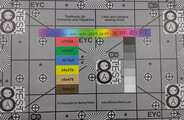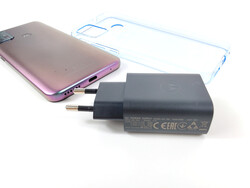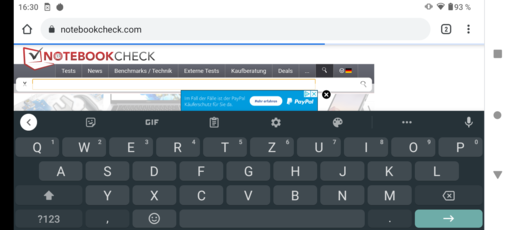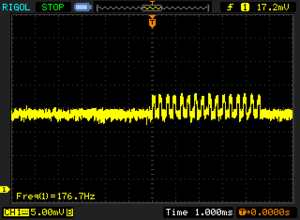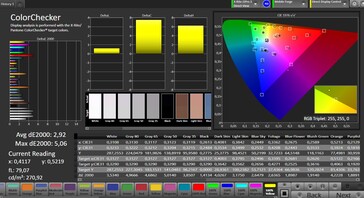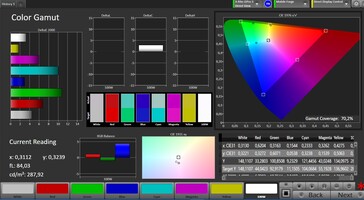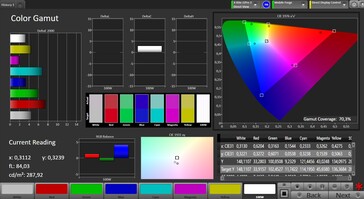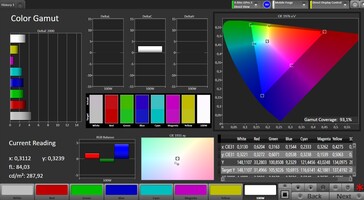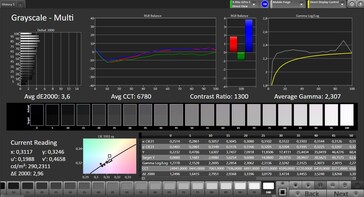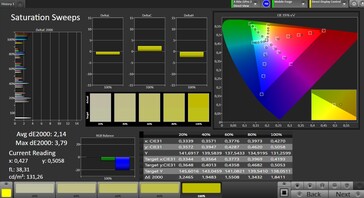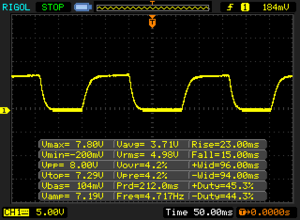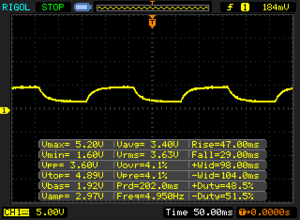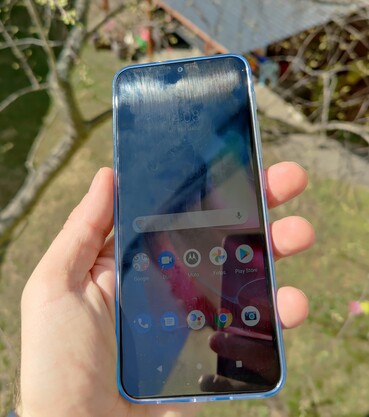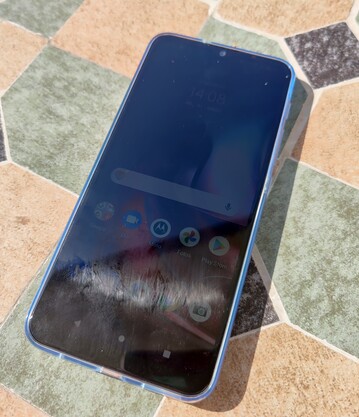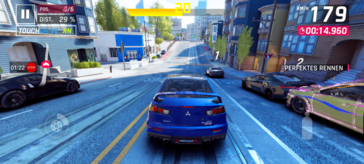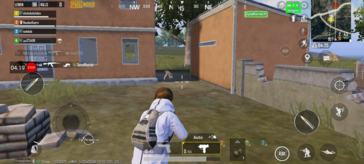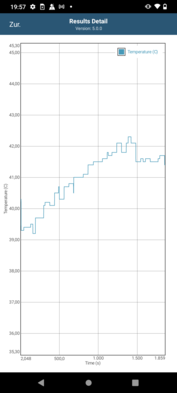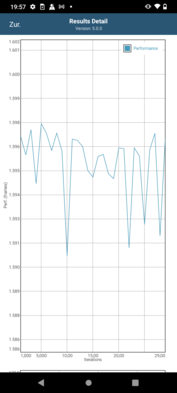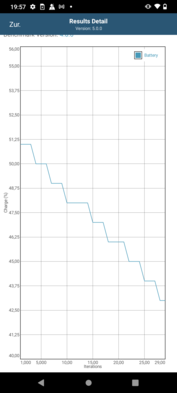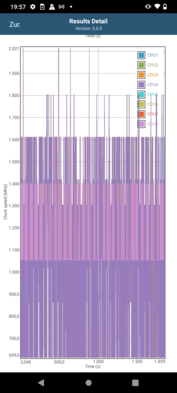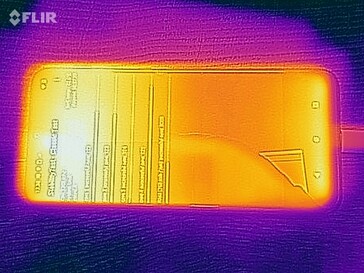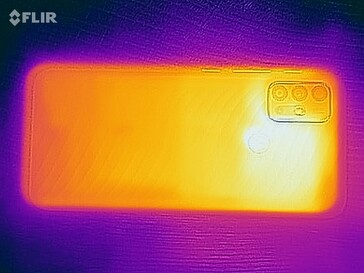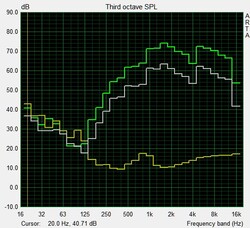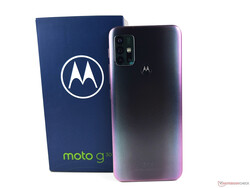Motorola Moto G30 Review: 90-Hz smartphone with an IP certification and NFC for less than 180 Euros
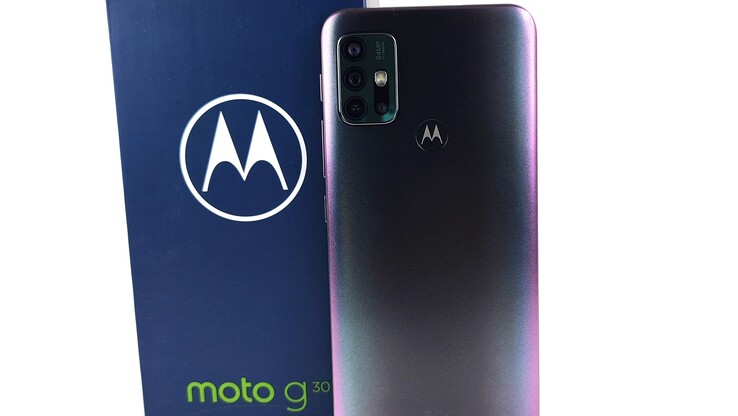
Motorola’s latest mid-range smartphone comes with a beefy quad-camera system. The main camera of the Moto G30 has a 64-MP sensor. Furthermore, the rest of the specifications are also rather impressive, especially given the fact that the version with 4 GB of RAM has an MSRP of 179 Euros (~$212). The variant with 6 GB of RAM costs only 10 Euros (~$12) more.
The mid-range smartphone is powered by the Qualcomm Snapdragon 662 and features a 6.5-inch screen with a native resolution of 1600x720 pixels and a 90-Hz refresh rate. The 5000-mAh battery is quite large. It supports 20-watt charging, thanks to Motorola’s TurboPower fast-charging technology.
Those who can do without the 90-Hz screen should take a look at the Moto G10, which was introduced alongside the Moto G30.
Likely Competitors
Rating | Date | Model | Weight | Drive | Size | Resolution | Price |
|---|---|---|---|---|---|---|---|
| 77.6 % v7 (old) | 04 / 2021 | Motorola Moto G30 SD 662, Adreno 610 | 197 g | 128 GB eMMC Flash | 6.50" | 1600x720 | |
| 72.5 % v7 (old) | 03 / 2021 | Samsung Galaxy A02s SD 450, Adreno 506 | 196 g | 32 GB eMMC Flash | 6.50" | 1600x720 | |
| 77.2 % v7 (old) | 02 / 2021 | Realme 7i Helio G85, Mali-G52 MP2 | 208 g | 64 GB eMMC Flash | 6.50" | 1600x720 | |
| 77.2 % v7 (old) | 01 / 2021 | OnePlus Nord N100 SD 460, Adreno 610 | 188 g | 64 GB UFS 2.1 Flash | 6.52" | 1600x720 | |
| 81.8 % v7 (old) | 10 / 2020 | Xiaomi Poco X3 NFC SD 732G, Adreno 618 | 215 g | 64 GB UFS 2.0 Flash | 6.67" | 2400x1080 | |
| 79.9 % v7 (old) | 09 / 2020 | Xiaomi Redmi Note 9 Helio G85, Mali-G52 MP2 | 199 g | 64 GB eMMC Flash | 6.53" | 2340x1080 |
Case - Motorola smartphone with a notch
The front of the Moto G30 is protected by scratch-resistant Panda Glass. The screen of the Motorola smartphone is not curved. Our review device comes in the colour scheme known as "Pastel Sky". The plastic back has a purplish sheen to it, which we find quite appealing. However, the back does not feel particularly good in the hand. The rigidity and the build quality are on a satisfactory level. Moreover, the Moto G30 has an IP52 certification. This means that it should not be damaged by rain or sweat.
Both the Moto G30 and its smaller sibling Moto G10 have the same design. Both smartphones feature the same 6.5-inch IPS screen with small side bezels. However, the Moto G smartphones have a mediocre screen-to-body ratio of 82%, because of their large top and bottom bezels.
Connectivity - Moto G30 with a 3.5-mm jack
The Moto smartphone leaves nothing to be desired when it comes to connectivity. The Moto G30 features Miracast, USB OTG functionality, a 3.5-mm audio jack and an FM tuner. Our review device supports Widevine L1 DRM, which means that it can stream video in HD quality.
The G30 comes with 128 GB of slow eMMC memory, 105 GB of which is available to the user. Those who need more storage space can insert a microSD card with a capacity of up to 1 TB into the Moto G30. However, doing so will preclude you from using two SIM cards simultaneously. Wired data transfers can be carried out via the USB Type-C port, which operates at USB 2.0 speeds.
Software - Motorola smartphone with Android 11
The Moto G30 runs Android 11 with a custom launcher known as MyUX. The smartphone ships with the security patches from January, 2021.
The minimalistic launcher comes with the Moto Experiences application, which allows you to customise the interface or assign gestures to perform different actions, such as turning on the flashlight. Furthermore, the G30 comes with the security application known as ThinkShield for Mobile, which is supposed to protect users from malware, phishing and network attacks.
The Moto G30 does not ship with any bloatware. The only third-party application comes from Facebook. All other applications come from either Google or Motorola itself.
Communication and Geolocation - Moto G30 with NFC
The mid-range Motorola smartphone supports NFC, Bluetooth 5.1 and Wi-Fi 5 (IEEE-802.11 ac). With our reference-grade router Netgear Nighthawk AX 12, the Moto G30 achieves decent data transfer rates. However, it is beaten by the Poco X3 NFC. The G30 has no issues with signal stability.
Thanks to the Snapdragon X11 modem, the Moto G30 can operate in LTE networks. The Motorola smartphone supports 13 LTE bands, which is rather good for a device in this price bracket. All LTE frequencies relevant in Germany are supported.
| Networking | |
| iperf3 transmit AX12 | |
| Xiaomi Poco X3 NFC | |
| Realme 7i | |
| Xiaomi Redmi Note 9 | |
| OnePlus Nord N100 | |
| Motorola Moto G30 | |
| Samsung Galaxy A02s | |
| iperf3 receive AX12 | |
| Xiaomi Poco X3 NFC | |
| Xiaomi Redmi Note 9 | |
| OnePlus Nord N100 | |
| Realme 7i | |
| Motorola Moto G30 | |
| Samsung Galaxy A02s | |
In order to determine how accurate our review device is when it comes to geolocation, we take it with us on a bike ride. During this ride, we are also accompanied by the professional navigator Garmin Edge 520. The Moto G30 had no trouble mapping our route. All in all, the Motorola smartphone is good enough for daily navigation.
Outdoors, the Android smartphone had no trouble determining the user’s location. Indoors, the Moto G30 was less accurate. For geolocation, the Motorola smartphone relies on the following global navigation satellite systems: GPS, GLONASS, and Galileo.
Telephony & Call Quality - Motorola smartphone with VoLTE
Because the G30 does not provide a high call volume, you will have to hold it close to your ear to hear what the person of the other end of the call is saying. Moreover, the ear-speaker sounds tinny and echoey. The Moto G30 can be used to make video calls without any issues, thanks to the dual-microphone array.
The Motorola smartphone supports VoLTE and Wi-Fi Calling. The G30 does not support eSIM functionality.
Cameras - Motorola smartphone with a quad-camera system
The front-facing camera of the Moto G30 has a 13-MP image sensor. It is located in the notch and produces blurry selfies in Bokeh mode. Things are similarly bad in standard mode. However, the shots are good enough for Instagram and other social media platforms. The front-facing shooter can record 1080p video at 30 FPS.
The quad-camera on the back consist of a 64-MP main shooter, an ultra-wide angle lens, a macro lens and a depth sensor. The image sensor of the main shooter is reported to be from Samsung.
Because of 4-1 pixel binning, the main camera produces 16-MP photographs in standard mode. Nonetheless, the photographs do not look very impressive. They lack dynamic range, appear poorly lit and just look blurry. Moreover, the shots often turn out overexposed. The main shooter offers 8X digital zoom. The colour reproduction is quite good, though. Green tones are reproduced particularly well.
The 118° ultra wide-angle lens is a nice addition to the overall package. Howbeit, like in other sub-200-Euro smartphones, it produces mediocre images. Distortion correction does not work very well. What is more, there are other issues such as blurriness around the edges.
The wide-angle camera and the ultra wide-angle lens can record video at 1080p30 at best. Switching between cameras while recording is not possible.
Image comparison
Choose a scene and navigate within the first image. One click changes the position on touchscreens. One click on the zoomed-in image opens the original in a new window. The first image shows the scaled photograph of the test device.
Main cameraMain cameraLow-light photographyUltra wide-angle lensWe use X-Rite’s ColorChecker Passport to further examine the colour accuracy of the 64-MP rear camera. We take two photographs of the ColorChecker Passport, one under full studio lighting, and the other at 1 Lux. Under controlled lighting conditions, most colours are well-reproduced. There are no major colour deviations to report. However, some colours are overbrightened, which is a typical issue for smartphones in this price range. The photographs of our testing chart appear somewhat blurry.
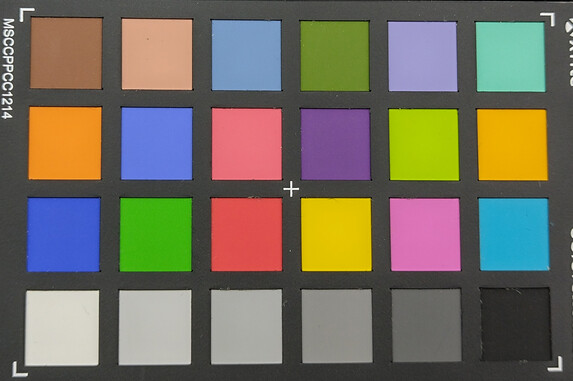

Accessories and Warranty - Moto G30 with a protective case
Input Devices and Handling - Motorola smartphone with FaceUnlock
The capacitive touchscreen reacts reliably and promptly to inputs. The hardware buttons have a clear actuation point and sit firmly in their cutouts. Just like other Moto smartphones, the Mote G30 features a dedicated Google Assistant button.
The fingerprint sensor on the back unlocks the smartphone within a second. However, it has some issues with reliability. Occasionally, it fails to recognise the fingerprint. The 2D face unlock works just as quickly but is less secure.
Display - Motorola smartphone with a 90 Hz panel
The 6.5-inch IPS display of the Moto G30 has a native resolution of 1600x720 pixels. This is why the pixel density amounts to only 270 PPI. The screen refreshes at 90 Hz, which is why the G30 feels smoother than competing devices with a 60-Hz display.
When it comes to maximum screen brightness, the Motorola smartphone does not cut a fine figure. When displaying pure white, we measured an average brightness of only 263 cd/m². The brightness distribution of 83% is not on a satisfactory level as well. In the APL50 test, we measured a brightness of 338 cd/m², which is still very low. Moreover, the panel suffers from low-frequency PWM flickering.
| |||||||||||||||||||||||||
Brightness Distribution: 83 %
Center on Battery: 284 cd/m²
Contrast: 835:1 (Black: 0.34 cd/m²)
ΔE ColorChecker Calman: 2.92 | ∀{0.5-29.43 Ø4.77}
ΔE Greyscale Calman: 3.6 | ∀{0.09-98 Ø5}
93.1% sRGB (Calman 2D)
Gamma: 2.307
CCT: 6780 K
| Motorola Moto G30 LCD IPS, 1600x720, 6.5" | Samsung Galaxy A02s PLS, 1600x720, 6.5" | Realme 7i IPS, 1600x720, 6.5" | OnePlus Nord N100 IPS, 1600x720, 6.5" | Xiaomi Poco X3 NFC IPS, 2400x1080, 6.7" | Xiaomi Redmi Note 9 IPS LCD, 2340x1080, 6.5" | |
|---|---|---|---|---|---|---|
| Screen | -8% | -25% | 33% | 36% | 82% | |
| Brightness middle (cd/m²) | 284 | 482 70% | 597 110% | 474 67% | 623 119% | 553 95% |
| Brightness (cd/m²) | 263 | 460 75% | 569 116% | 456 73% | 600 128% | 527 100% |
| Brightness Distribution (%) | 83 | 92 11% | 91 10% | 86 4% | 93 12% | 89 7% |
| Black Level * (cd/m²) | 0.34 | 0.44 -29% | 0.74 -118% | 0.35 -3% | 0.54 -59% | 0.12 65% |
| Contrast (:1) | 835 | 1095 31% | 807 -3% | 1354 62% | 1154 38% | 4608 452% |
| Colorchecker dE 2000 * | 2.92 | 5.52 -89% | 5.47 -87% | 2.7 8% | 1.8 38% | 3.8 -30% |
| Colorchecker dE 2000 max. * | 5.06 | 7.78 -54% | 12.11 -139% | 4.89 3% | 4.7 7% | 8.7 -72% |
| Greyscale dE 2000 * | 3.6 | 6.3 -75% | 6.9 -92% | 1.9 47% | 3.3 8% | 2.2 39% |
| Gamma | 2.307 95% | 2.54 87% | 2.363 93% | 2.31 95% | 2.26 97% | 2.3 96% |
| CCT | 6780 96% | 7882 82% | 8091 80% | 6430 101% | 6712 97% | 6727 97% |
* ... smaller is better
Screen Flickering / PWM (Pulse-Width Modulation)
| Screen flickering / PWM detected | 176.7 Hz | ≤ 20 % brightness setting | |
The display backlight flickers at 176.7 Hz (worst case, e.g., utilizing PWM) Flickering detected at a brightness setting of 20 % and below. There should be no flickering or PWM above this brightness setting. The frequency of 176.7 Hz is relatively low, so sensitive users will likely notice flickering and experience eyestrain at the stated brightness setting and below. In comparison: 53 % of all tested devices do not use PWM to dim the display. If PWM was detected, an average of 8084 (minimum: 5 - maximum: 343500) Hz was measured. | |||
The LCD panel of the Moto G30 cannot display pure black. Nevertheless, it still has a decent black value of 0.34 cd/m². OLED panels can display pure black, though. The contrast ratio is well below 1000:1, because the screen brightness is so low. Most competitors in this price bracket offer a higher contrast ratio than the Moto G30.
The Moto G30 offers three display modes: saturated, intensified and natural. In natural mode, the screen of the G30 is capped to the sRGB colour space, most of which it manages to cover. The grayscale tracking (DeltaE: 3.6) is on a good level, meaning that most shades of grey are displayed properly. The colour reproduction (DeltaE: 2.9) is also on a good level, especially for a smartphone in this price range.
Display Response Times
| ↔ Response Time Black to White | ||
|---|---|---|
| 38 ms ... rise ↗ and fall ↘ combined | ↗ 23 ms rise | |
| ↘ 15 ms fall | ||
| The screen shows slow response rates in our tests and will be unsatisfactory for gamers. In comparison, all tested devices range from 0.1 (minimum) to 240 (maximum) ms. » 96 % of all devices are better. This means that the measured response time is worse than the average of all tested devices (20.2 ms). | ||
| ↔ Response Time 50% Grey to 80% Grey | ||
| 76 ms ... rise ↗ and fall ↘ combined | ↗ 47 ms rise | |
| ↘ 29 ms fall | ||
| The screen shows slow response rates in our tests and will be unsatisfactory for gamers. In comparison, all tested devices range from 0.165 (minimum) to 636 (maximum) ms. » 99 % of all devices are better. This means that the measured response time is worse than the average of all tested devices (31.6 ms). | ||
Outdoors, the Motorola smartphone leaves a very poor impression. Even on a cloudy day, the screen of the Moto G30 is rather difficult to read. On a sunny day, though, it is impossible to read. The only thing you can do here is to try to shield the screen with your hand to make it more legible. The Moto G30 is not pleasant to use outside.
The viewing angles of the IPS panel are quite good. However, the brightness drops off at actute angles.
Performance - Moto G30 with a Snapdragon SoC
The Moto G30 comes with a Qualcomm Snapdragon 662. This SoC is manufactured on the 11-nm node and offers eight Kryo 260 cores (four Cortex-A73 cores, four Cortex-A53 cores). The Qualcomm Adreno 610 GPU is integrated into the SoC.
The 6 GB version of the Moto G30 feels quite responsive, thanks in no small part to the low-resolution 90-Hz display. However, loading times can get long, because the Motorola smartphone features slow eMMC memory. Stuttering is also a problem, which becomes especially apparent when you are browsing on heavy sites. On media-rich sites, images can take a while to load as well.
In the CPU benchmarks, the Qualcomm SoC achieves decent results, but cannot keep up with either the Helio G85 in the realme 7i or the Snapdragon 732G in the Poco X3 NFC. In GFXBench, the Moto G30 is also beaten by the realme 7i and the Poco X3 NFC.
| GFXBench 3.0 | |
| on screen Manhattan Onscreen OGL (sort by value) | |
| Motorola Moto G30 | |
| Samsung Galaxy A02s | |
| OnePlus Nord N100 | |
| Xiaomi Poco X3 NFC | |
| Average Qualcomm Snapdragon 662 (16 - 34, n=10) | |
| Average of class Smartphone (18 - 166, n=155, last 2 years) | |
| 1920x1080 1080p Manhattan Offscreen (sort by value) | |
| Motorola Moto G30 | |
| Samsung Galaxy A02s | |
| OnePlus Nord N100 | |
| Xiaomi Poco X3 NFC | |
| Average Qualcomm Snapdragon 662 (19 - 21, n=10) | |
| Average of class Smartphone (12 - 606, n=154, last 2 years) | |
| GFXBench 3.1 | |
| on screen Manhattan ES 3.1 Onscreen (sort by value) | |
| Motorola Moto G30 | |
| Samsung Galaxy A02s | |
| OnePlus Nord N100 | |
| Xiaomi Poco X3 NFC | |
| Average Qualcomm Snapdragon 662 (11 - 26, n=10) | |
| Average of class Smartphone (11 - 166, n=155, last 2 years) | |
| 1920x1080 Manhattan ES 3.1 Offscreen (sort by value) | |
| Motorola Moto G30 | |
| Samsung Galaxy A02s | |
| OnePlus Nord N100 | |
| Xiaomi Poco X3 NFC | |
| Average Qualcomm Snapdragon 662 (13 - 14, n=10) | |
| Average of class Smartphone (8.4 - 413, n=154, last 2 years) | |
| AnTuTu v8 - Total Score (sort by value) | |
| Motorola Moto G30 | |
| Samsung Galaxy A02s | |
| OnePlus Nord N100 | |
| Xiaomi Poco X3 NFC | |
| Average Qualcomm Snapdragon 662 (167471 - 185542, n=9) | |
| UL Procyon AI Inference for Android - Overall Score NNAPI (sort by value) | |
| Motorola Moto G30 | |
| Average Qualcomm Snapdragon 662 (3674 - 4708, n=2) | |
| Average of class Smartphone (3769 - 81594, n=132, last 2 years) | |
| Jetstream 2 - 2.0 Total Score | |
| Average of class Smartphone (23.8 - 387, n=147, last 2 years) | |
| Xiaomi Poco X3 NFC (Chrome 85) | |
| Average Qualcomm Snapdragon 662 (30.4 - 32.4, n=10) | |
| Motorola Moto G30 (Chrome89) | |
| Xiaomi Redmi Note 9 (Chrome 85) | |
| OnePlus Nord N100 (Chrome 87) | |
| Samsung Galaxy A02s (Chrome 89) | |
| JetStream 1.1 - Total Score | |
| Xiaomi Poco X3 NFC (Chrome 85) | |
| Xiaomi Redmi Note 9 (Chrome 85) | |
| Average Qualcomm Snapdragon 662 (47.8 - 53.7, n=9) | |
| Motorola Moto G30 (Chrome89) | |
| OnePlus Nord N100 (Chrome 87) | |
| Samsung Galaxy A02s | |
| Speedometer 2.0 - Result 2.0 | |
| Average of class Smartphone (15.2 - 643, n=119, last 2 years) | |
| Xiaomi Poco X3 NFC (Chrome 85) | |
| Average Qualcomm Snapdragon 662 (26.5 - 29.3, n=9) | |
| Motorola Moto G30 (Chrome89) | |
| Xiaomi Redmi Note 9 (Chrome 85) | |
| OnePlus Nord N100 (Chome 87) | |
| Samsung Galaxy A02s (Chome 89) | |
| WebXPRT 3 - Overall | |
| Average of class Smartphone (38 - 380, n=30, last 2 years) | |
| Xiaomi Poco X3 NFC (Chrome 85) | |
| Average Qualcomm Snapdragon 662 (51 - 59, n=11) | |
| Motorola Moto G30 (Chrome89) | |
| Xiaomi Redmi Note 9 (Chrome 85) | |
| OnePlus Nord N100 (Chrome 87) | |
| Samsung Galaxy A02s (Chrome 89) | |
| Octane V2 - Total Score | |
| Average of class Smartphone (2228 - 126661, n=194, last 2 years) | |
| Xiaomi Poco X3 NFC (Chrome 85) | |
| Xiaomi Redmi Note 9 (Chrome 85) | |
| Motorola Moto G30 (Chrome89) | |
| Average Qualcomm Snapdragon 662 (8893 - 10247, n=14) | |
| OnePlus Nord N100 (Chrome 87) | |
| Samsung Galaxy A02s (Chrome 89) | |
| Mozilla Kraken 1.1 - Total | |
| Samsung Galaxy A02s (Chrome 89) | |
| OnePlus Nord N100 (Chrome 87) | |
| Motorola Moto G30 (Chrome89) | |
| Average Qualcomm Snapdragon 662 (3779 - 4650, n=11) | |
| Xiaomi Redmi Note 9 (Chrome 85) | |
| Xiaomi Poco X3 NFC (Chrome 85) | |
| Average of class Smartphone (257 - 28190, n=154, last 2 years) | |
* ... smaller is better
| Motorola Moto G30 | Samsung Galaxy A02s | Realme 7i | OnePlus Nord N100 | Xiaomi Poco X3 NFC | Xiaomi Redmi Note 9 | Average 128 GB eMMC Flash | Average of class Smartphone | |
|---|---|---|---|---|---|---|---|---|
| AndroBench 3-5 | 82% | 91% | 153% | 136% | 173% | 47% | 1139% | |
| Sequential Read 256KB (MB/s) | 214.5 | 299 39% | 316.4 48% | 504 135% | 506 136% | 306.6 43% | 300 ? 40% | 2235 ? 942% |
| Sequential Write 256KB (MB/s) | 190.2 | 103.9 -45% | 187.2 -2% | 219 15% | 173.1 -9% | 248.1 30% | 195.1 ? 3% | 1871 ? 884% |
| Random Read 4KB (MB/s) | 247.4 | 84.8 -66% | 77.4 -69% | 106.1 -57% | 123.4 -50% | 65.1 -74% | 85.9 ? -65% | 297 ? 20% |
| Random Write 4KB (MB/s) | 12.2 | 88.5 625% | 89.5 634% | 120.8 890% | 112.6 823% | 146.9 1104% | 58.1 ? 376% | 343 ? 2711% |
| Sequential Read 256KB SDCard (MB/s) | 153.8 ? | 86.4 ? -44% | 83.9 ? -45% | 85.2 ? -45% | 75.2 ? -51% | 84.4 ? -45% | 78.1 ? -49% | |
| Sequential Write 256KB SDCard (MB/s) | 81.9 ? | 69.4 ? -15% | 63.5 ? -22% | 64.3 ? -21% | 55.6 ? -32% | 63.5 ? -22% | 61.8 ? -25% |
Gaming - Motorola smartphone is not suited for gaming
We use Gamebench to record frame rates. All games that we benchmarked ran without any issues. Both the touchscreen and the speaker functioned well.
Despite a low 720 resolution, the Moto G30 can only handle most Android games on low settings. For example, PUBG Mobile cannot be played at HD settings and 30 FPS can only be achieved in the best case scenario. The Moto G30 can only achieve 24 FPS on average in Asphalt Legends. However, drops below 20 FPS are very frequent, which is why it cannot be described as playable.
Emissions - Moto G30 does not throttle
Temperature
The surface temperatures of the Moto G30 reach 42 °C (107.6 °F) under load. Such temperatures should not have much of an effect on the overall user experience. When idle, Motorola’s smartphone does not get warm at all.
We use the GFXBench benchmark to see how the Qualcomm SoC behaves under sustained load. Here, the same sequence is run 30 times in a row and the results of each sequence run are recorded. The Moto G30 throttles down only a little in the demanding Manhattan section (OpenGL ES 3.1).
The Motorola smartphone does not throttle in our 3DMark (Wild Life) stress test.
| 3DMark - Wild Life Stress Test Stability | |
| Motorola Moto G30 | |
| OnePlus Nord N100 | |
| Xiaomi Poco X3 NFC | |
(±) The maximum temperature on the upper side is 40.8 °C / 105 F, compared to the average of 35.2 °C / 95 F, ranging from 21.9 to 247 °C for the class Smartphone.
(±) The bottom heats up to a maximum of 41.7 °C / 107 F, compared to the average of 34 °C / 93 F
(+) In idle usage, the average temperature for the upper side is 25.8 °C / 78 F, compared to the device average of 32.9 °C / 91 F.
Speakers
The speaker of the low-priced mid-range smartphone sounds good enough. However, it is not particularly loud (82 dB). The mids are overrepresented, but they are quite faithfully reproduced. All in all, the mono-speaker of the Moto G30 is on a normal level for a device in this price range.
You can connect a set of headphones via the 3.5-mm audio jack or via Bluetooth. All major Bluetooth codecs such as SBC, AAC, aptX, aptX HD, aptX Adaptive and LDAC are supported.
Motorola Moto G30 audio analysis
(+) | speakers can play relatively loud (82.2 dB)
Bass 100 - 315 Hz
(-) | nearly no bass - on average 66.6% lower than median
(+) | bass is linear (0% delta to prev. frequency)
Mids 400 - 2000 Hz
(-) | nearly no mids - on average 66.6% lower than median
(+) | mids are linear (0% delta to prev. frequency)
Highs 2 - 16 kHz
(-) | nearly no highs - on average 66.6% lower than median
(+) | highs are linear (0% delta to prev. frequency)
Overall 100 - 16.000 Hz
(-) | overall sound is not linear (119.4% difference to median)
Compared to same class
» 88% of all tested devices in this class were better, 8% similar, 3% worse
» The best had a delta of 11%, average was 35%, worst was 134%
Compared to all devices tested
» 96% of all tested devices were better, 3% similar, 1% worse
» The best had a delta of 4%, average was 24%, worst was 134%
OnePlus Nord N100 audio analysis
(+) | speakers can play relatively loud (90.1 dB)
Bass 100 - 315 Hz
(-) | nearly no bass - on average 80.9% lower than median
(+) | bass is linear (0% delta to prev. frequency)
Mids 400 - 2000 Hz
(-) | nearly no mids - on average 80.9% lower than median
(+) | mids are linear (0% delta to prev. frequency)
Highs 2 - 16 kHz
(-) | nearly no highs - on average 80.9% lower than median
(+) | highs are linear (0% delta to prev. frequency)
Overall 100 - 16.000 Hz
(-) | overall sound is not linear (115.2% difference to median)
Compared to same class
» 87% of all tested devices in this class were better, 4% similar, 9% worse
» The best had a delta of 11%, average was 35%, worst was 134%
Compared to all devices tested
» 96% of all tested devices were better, 1% similar, 3% worse
» The best had a delta of 4%, average was 24%, worst was 134%
Battery Life - Motorola smartphone with a big battery
Energy Consumption
When idle, the Moto G30 is quite energy-efficient. However, it is a lot less energy-efficient under load, especially when you max out the brightness, which is what you will have to do quite often, because the screen brightness of the Motorola smartphone is so low.
The Moto G30 takes about 2 hours to fully charge with the included 20-W charger.
| Off / Standby | |
| Idle | |
| Load |
|
Key:
min: | |
| Motorola Moto G30 5000 mAh | Samsung Galaxy A02s 5000 mAh | OnePlus Nord N100 5000 mAh | Xiaomi Poco X3 NFC 5160 mAh | Xiaomi Redmi Note 9 5020 mAh | Average Qualcomm Snapdragon 662 | Average of class Smartphone | |
|---|---|---|---|---|---|---|---|
| Power Consumption | 1% | 10% | -19% | -0% | -18% | -9% | |
| Idle Minimum * (Watt) | 0.8 | 0.8 -0% | 0.56 30% | 0.93 -16% | 0.74 7% | 0.846 ? -6% | 0.847 ? -6% |
| Idle Average * (Watt) | 1.5 | 1.9 -27% | 1.8 -20% | 2.47 -65% | 2.17 -45% | 2.51 ? -67% | 1.448 ? 3% |
| Idle Maximum * (Watt) | 1.8 | 2.5 -39% | 2.3 -28% | 2.51 -39% | 2.2 -22% | 2.72 ? -51% | 1.633 ? 9% |
| Load Average * (Watt) | 6.1 | 4.2 31% | 3.9 36% | 5.62 8% | 4.17 32% | 4.99 ? 18% | 6.96 ? -14% |
| Load Maximum * (Watt) | 8.4 | 5.1 39% | 5.6 33% | 6.93 17% | 6.11 27% | 7.16 ? 15% | 11.3 ? -35% |
* ... smaller is better
Battery Life
With the 60-Hz refresh rate, the Moto G30 achieves a battery run time of 17.5 hours in our practically oriented Wi-Fi test, in which we set the display brightness to 150 cd/m². In our video test, the Moto G30 lasted 22.5 hours.
However, in our stress text, the 6.5-inch Moto G30 died after 3.5 hours. Hopefully, Motorola will improve battery life under full load through future updates.
| Motorola Moto G30 5000 mAh | Samsung Galaxy A02s 5000 mAh | Realme 7i 6000 mAh | OnePlus Nord N100 5000 mAh | Xiaomi Poco X3 NFC 5160 mAh | Xiaomi Redmi Note 9 5020 mAh | |
|---|---|---|---|---|---|---|
| Battery runtime | 19% | 22% | 7% | 6% | 1% | |
| Reader / Idle (h) | 38.9 | 45.8 18% | 41.9 8% | 40.5 4% | 38.2 -2% | |
| H.264 (h) | 22.5 | 21.6 -4% | 20.1 -11% | 19.8 -12% | 18.6 -17% | |
| WiFi v1.3 (h) | 17.8 | 20 12% | 21.8 22% | 19.2 8% | 18.6 4% | 14.5 -19% |
| Load (h) | 3.7 | 5.5 49% | 4.5 22% | 4.7 27% | 5.2 41% |
Pros
Cons
Verdict for the Motorola Moto G30 - It is a pity that the mid-range smartphone flounders in one of the most important disciplines
If you take the display out of the equation, then the Moto G30 looks like a good low-priced mid-range smartphone. The Motorola smartphone comes with 128 GB of slow eMMC memory, an NFC chip, a radio tuner and a 3.5-mm headphone jack. What is more, the mid-range smartphone is well-built and allows users to insert a second SIM card or a microSD card.
The Moto G30 also looks good when it comes to battery life. The battery capacity is quite larger and charging speeds are also decent (20 watts). Even though the Moto G30 features the Qualcomm Snapdragon 662, which is slower than SoCs in competing products, it is still a capable mid-range smartphone.
Motorola did a lot right with its mid-range smartphone. However, the 90-Hz display is not good enough for a device with such a price tag.
The Moto G30 looks good on paper. However, in reality, it is not as good as it seems. Take the 90-Hz display for example. It feels a lot smoother than 60-Hz screens, but it is just too dim, which makes the whole situation even more annoying. There is some debate about whether or not 720p screens are appropriate in 180-Euro (~$212) smartphones in 2021 (we think that they are not). Howbeit, no one disagrees that dim screens with unevenly distributed brightness are fit for smartphones with this price tag.
The cameras also leave a lot to be desired. Neither the main shooter nor the 118° ultra wide-angle lens managed to impress us. The front-facing camera left a bad impression as well.
Price and Availability
Currently, the Motorola Moto G30 is available on amazon.co.uk for 159 pounds ($220).
Motorola Moto G30
- 04/03/2021 v7 (old)
Marcus Herbrich




